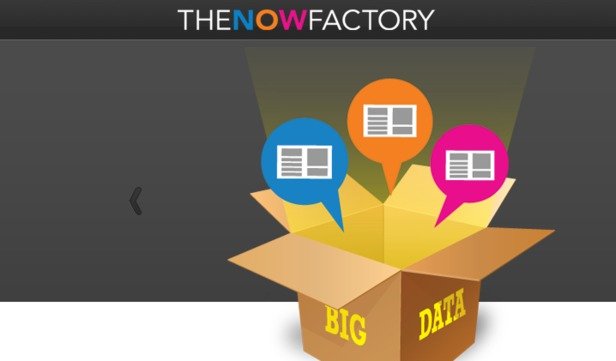The ultimate goal of every business is to deliver a flawless customer experience, right? After all, when we choose to hand over our hard-earned cash for a particular product or service, not only do we demand exactly what we’re paying for, but we also expect a little extra. That little extra is customer service, which surmounts to the entire customer experience.
There’s plenty of advice out there on how to deliver great customer service. According to Forbes, it’s as simple as letting customers get to know you, providing special services such as discounts or luxury gifts, being available and offering knowledge and a community for the customer to feel a part of. Being active on social media and being responsive to online reviews on sites like Yelp and Citysearch can let your customers know “you’re listening, and you care”.
Although customer service matters greatly, it plays a smaller part in the grand scheme of things: The customer experience. The overall customer experience is a compilation of several different moments throughout the customer lifecycle. These moments are often referred to as touch points, and they are the experiences that stick out the most when customers recall their journey with a company or question their loyalty to a particular brand. You can learn more about improving customer experience if you check out this post by Qualtrics.
In a company’s research with a leading TV provider, they discovered that although the organization was the best at managing churn in a mature market with increasing costs for keeping loyal customers, the firm’s focus on maximizing the quality of touch points wasn’t nearly as high as it should be. The company measured customer satisfaction on a regular basis, and every interaction via phone call, email or website was consistently high, but focus groups revealed that their experience with the company was that of an unhappy one.
It wasn’t because the customers were annoyed or unsatisfied with phone calls or field visits; it was the cumulative experience over several touchpoints involving several fields across the entire relationship.
Harvard Business Review gives 4 steps in managing the overall customer experience and creating a strong, loyal relationship with them.
Step One: Identify Key Journeys
Harvard Business Review worked with a three different companies, focusing on two different ways to styles of company transformation, each with directions of focus:
- Top-down, judgment-driven evaluations
- Bottom-up, data-driven analysis to varying degrees
Since three different companies were examined, each one required attention in a different area. The executive team at HBR focused on a 50% dissatisfaction rate with the installation process at the telecom company, a 40% churn amongst customers moving houses with the leading energy provider, and 33% of customers who cancelled the installations before or within 90 days of signing up with the integrated telecom fiber-optic.
The teams then worked with management to help deliver target attention to specific problem areas. This proved to be successful and showed that early detection of future problems is not as hard as it seems.
This style of management is valuable for targeted, sparse problems that need immediate attention. Those who want to transform the overall customer experience must also adopt a bottom-up effort that sets up a path for success.
According to HBR, a company should combine employee surveys with operational data across all functions at each touchpoint, assess how each sector performed and rate it in accordance to competition. Some of the best in-class companies use regression models to find with journeys have the greatest impact on customer experiences, then run-simulations to test out different initiates that can possibly be implemented.
Step Two: Understand Current Performance
Once you have combined additional research on performance with a bottom-up, data-driven analysis aimed to improve the overall transformation of the company, you can create a road map. The goal of this map is to clearly lay out each step of the journey and describe it in full detail. It also maps out the direction of processes and allows you to discover faulty or fragmented delivery processes. A good example of this is how some phone-based, tech-support systems will require a fee, with the goal being to “nudge” customers towards the self-service option. Instead, the was result was numerous callbacks and plenty of unsatisfied customers who failed to “do-it-themselves”.
In the case with the leading telecom provider, 50% of initial customers were dissatisfied with the service from order to installation. The executives clarified that the “provisioning journey” – the installation process – was the priority. They discovered that the main reason of this dissatisfaction was because of delays and misaligned incentives of the installation team. The root of these problems was traced back to the office. Errors were being made on a regular basis and employees weren’t being measured or evaluated for the accuracy of orders. There was no incentive to do their job to the best standards.
Step Three: Redesign and Engage
Once these steps have been completed, it’s important to always remember that the root of bad customer experiences stems from the inside out, and what may seem like a quick fix is often not. The most proven method of treating negative customer experiences is by gathering your cross-functional teams and addressing the problems that are affecting the other branches head-on.
In the case with HBR, the energy provider addressed the “moving house” journey as their most crucial area that needed transformation. They gathered all cross-functional teams together in one conference room and created a wall of customers’ quotes and visual depictions of what was experienced from start to finish.
The meeting ended up being a breakthrough for the company; most likely because no one had ever actually witnessed the entire journey or been held accountable for certain negative outcomes. There were 19 steps total, many involving complex hand offs from one department to another. There were a lot of operational glitches, but also a lot of communication glitches, like when a customer moves to a new home and receives too much or conflicting pieces of information from separate departments.
The team members of each department identified these specific hiccups and sat down with their counterparts to design a new approach to customer service. After brainstorming, they gave the customer an option to give input. The result was a new process that was four times as efficient, left customers more satisfied and made the operations of the company more aligned with their slogan: “We deliver”.
Step Four: Changing the Overall Mindset and Culture of the Customer Experience
To achieve this, two things must be done:
- A modification of the organizations processes in order to deliver journeys that are excellent and properly designed.
- An adjustment of the metrics, data and incentives that will support these journeys, and to direct them towards the overall experience instead of just specific touchpoints..
These steps may take years to perfect, but they are steps in the right direction, and they cater to the customer’s entire journey, instead of just individual experiences. These journey-based transformations will prove to reward your company with higher levels of customer satisfaction, more loyal employees, longer lasting customers and lower costs. The shift in the company culture will also prove to spark change and transformation from not only top-bottom, but from the bottom-up as well.
Trevor Micklow is a business writer and content curator based out of Chicago, IL. US. He specializes in digital strategies, social media, psychology, executive education and business school related topics. He has been working and coordinating the general content of IntelligentHQ’s business school directory, which gives key information and programme details on the top business schools in the world. He has a BS, Psychology from Central Michigan University.




























